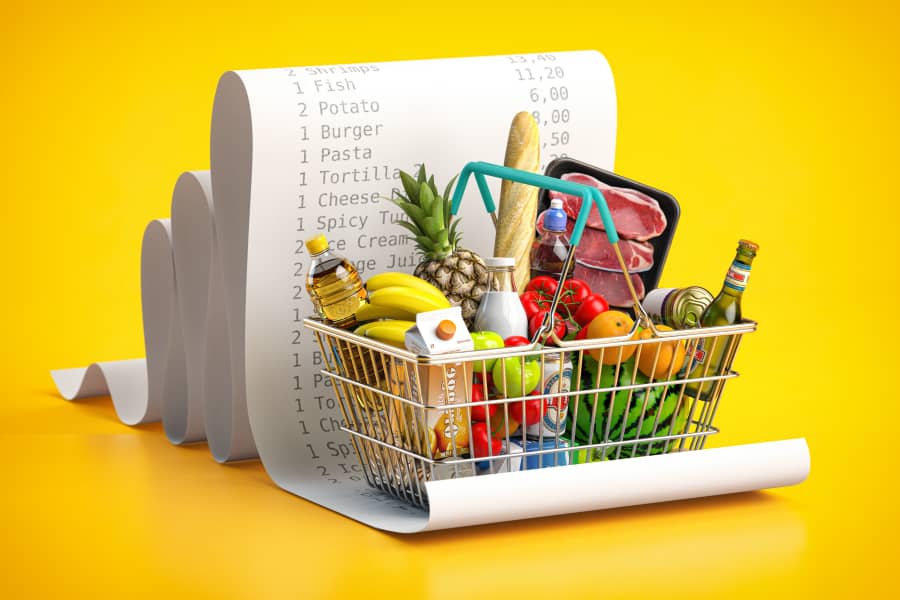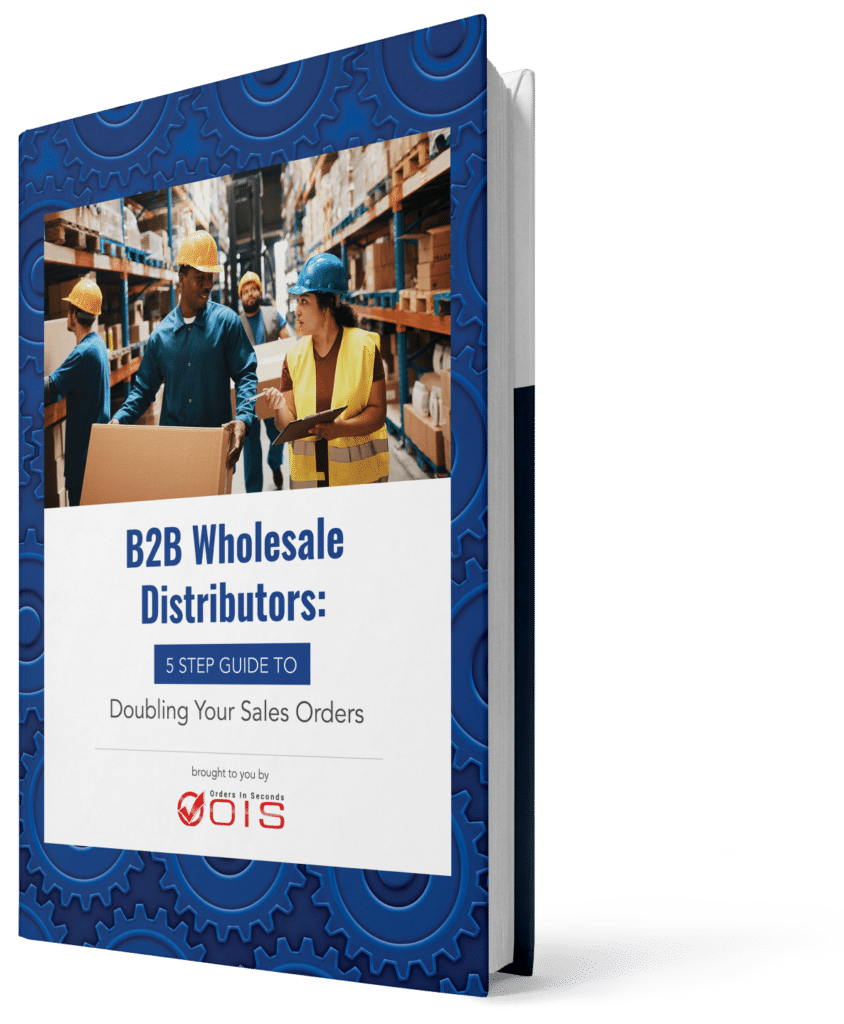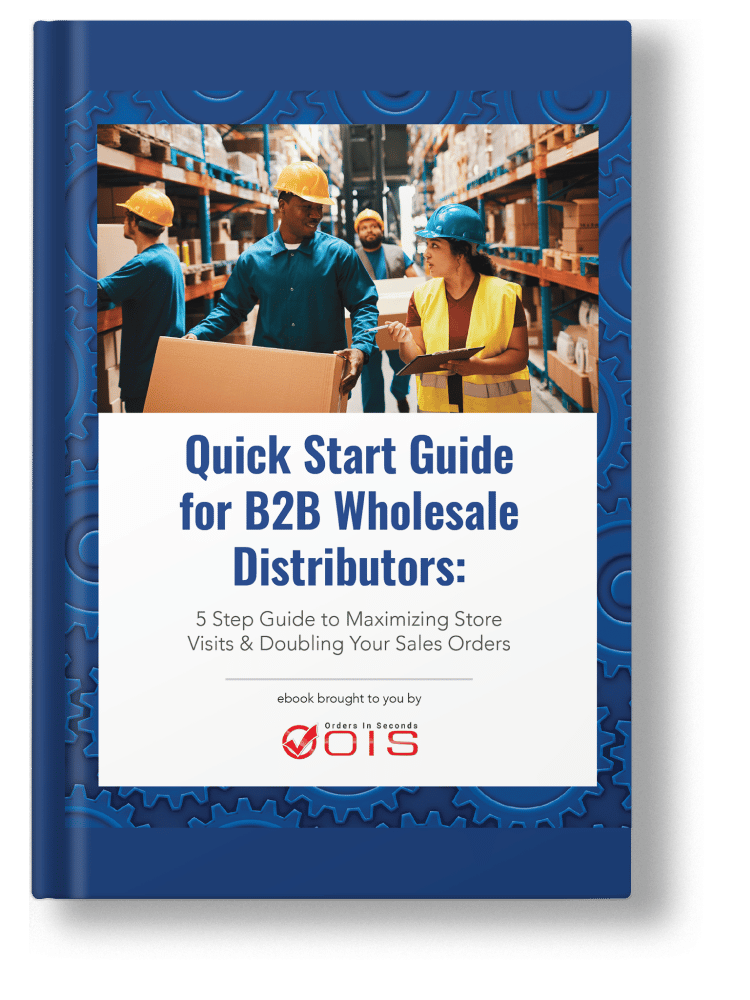When it comes to inflation and the continuous increase in costs that the entire process of selling consumer packaged goods (CPG) carries, there are many sides to consider.
Wholesale distributors and manufacturers suffer the biggest threat of inflation because of increasing costs of operations and supply shortages pushing prices up. Higher prices, means higher product costs for retailers. Both must face the tasks of negotiating prices with their customers while managing operational costs and trying to remain profitable.
From the grocery retailer’s side, inflation equals price markups for customers, which must be avoided at all cost. Why? Because it affects American’s shopping behaviors, choosing one store over another or one brand over another, strictly over the best deal, contributing to grocery price wars. We’ll touch more on this topic in a later section.
In the end, the entire supply chain takes a hit, as inflation levels increase costs and prices, organizations (manufacturers, wholesalers, and retailers) are forced to make tough decisions. Every business wants to protect itself while keeping its flow of customers, but it may seem close to impossible given the ripple effect inflation has.
In this blog post, you will learn more about inflation, its effect on food prices and grocery wars and what it means for your wholesale distribution or manufacturing business.
Inflation & Food Prices
What is inflation?
Inflation is the increase in prices of goods and services over time. Inflation is not tied to one specific product, it is an average increase of all cost of living expenses (i.e housing cost, grocery costs, gas costs, car costs, medical costs etc..)
In the United States, over the past 61 years, the inflation rate for consumer prices moved between -0.4% and 13.5% (source). This means, an item that cost $100.00 dollars in the 60’s would now cost around $929.00 dollars. Crazy, right?
How does inflation affect food prices?
The short answer, inflation has caused food prices to rise to unprecedented numbers contributing to changes in customer buying behavior which affects the entire supply chain but let’s dig a little deeper.
Globally, food inflation has been increasing since 2020 due to the pandemic and supply chain disruption. In 2022, the war in Ukraine was an additional factor that affected this upward trend, with food inflation increasing in developing countries, and then finally reaching more successful economies, like the United States.
In the U.S, food prices have registered an increase of 10.9% since July 2021, which has been the largest 12-month increase in 40 years according to the Bureau of Labor Statistics – Consumer Price Index (CPI). *CPI is the chief measure of inflation in the U.S.
The increase in food prices has a direct impact on household budgets, particularly those with low income. When food prices go up, it doesn’t affect everyone equally. Meaning, for people in the middle class, they can manage the increase, maybe buy a little less. But for lower income families, it can completely change where and what they purchase.
Supermarkets and other grocery retailers face this challenge of changing preferences by offering better deals that will bring more business their way, contributing to grocery price wars.
Grocery Price Wars
In business, the term “price war” defines a situation in which two or more competing businesses engage in an intense competition by way of reducing their prices. Companies compete on price to acquire market share a.ka. more customers.
This tactic when applied to the CPG industry is considered a “grocery price war”. Due to inflation and an already competitive landscape, many large food retailers, like Walmart or Meijer Supermarkets go head to head on reducing pricing to gain market share.
In the short run, shoppers reap the benefits of grocery price wars because they can take advantage of the low prices. This type of competition is usually not good for smaller grocery chains, since it threatens their profit margins and operations. With this in mind, wars can turn out to be favorable for big retailers that dominate the market. Eventually, smaller chains would not be able to keep up with the competition and close, which means the retail stores still standing would absorb their market share. In the long run, shoppers have the most to lose since fewer competitors in the market means prices will inevitably rise to levels that are generally higher than before the war took place.
For wholesale distributors and manufacturers grocery prices wars means a stronger demand from retailers to decrease price hikes. Since retailers want to benefit from offering lower prices to retain its customers. Putting suppliers and retailers at a crossroads between figuring out how to maintain costs low, while selling stocked inventory, and keeping revenue from product sales steady on both ends.
How does Inflation affect Wholesale Distributors and Manufacturers
In the food industry, inflation and the effects on food prices poses many challenges to organizations in the CPG supply chain. Let’s review how inflation is affecting manufacturers and wholesale distributors and what that means for your business.
Rise in Private Label Demand from Retailers
It doesn’t matter how loyal a customer is to a certain food brand, since inflation is causing food prices to increase, consumers are looking to stretch their dollar as much as possible. This change in shopping behavior has led cheaper private label brands to seize the moment and market.
Historically, private label brands have experienced growth when inflationary periods take the scene and in 2022 is no different (source).
Retailers are turning to private label brands because they provide the benefit of lower prices and differentiates the food retailer from its competitors.
This means wholesaler distributors and manufacturers should consider offering private label options to retailers. Buying products in bulk from the manufacturer, results in lower costs for wholesalers which can be passed down to retailers.
This savings helps retailers meet the needs of shoppers looking for a good deal.
Wholesalers and Manufacturers Must Negotiate Pricing for Retailers
Inflation and rising food prices has created the need for price negotiation between retailers, suppliers, and manufacturers. The challenge has become keeping prices high enough to generate profits, even in the face of rising fuel prices, labor and material.
While at the same time, keeping price increases low for retailers, who inevitably must pass down increased costs to consumers. As mentioned previously, due to the competitive nature of grocery sales and consumer shopping behavior increased pricing is to be avoided at all cost. Big food retailers lean on price negotiations with suppliers to prevent sharp increases to cost.
According to the Wall Street Journal, Kroger Co., as well as other grocery chains, have said “that they ask food brands to prove why higher costs are necessary before making a deal, warning manufacturers that they will cease to carry their products if food companies are not willing to negotiate prices.” The grocer has warned manufacturers looking to enforce price changes that the higher they raise their prices, the increased likelihood of customers not purchasing. At times, retailers even refuse to stock new items because of the increase in cost.
For wholesalers, retailers forgoing to stock new products or dropping entire product lines is bad news because it results in dead stock or inventory that just sits in the warehouse collecting dust.
It’s vital from a business standpoint, that price negotiation occurs at every stage of the supply chain to lessen the overall impact inflation has on costs.
Increased Costs Mean Automation is Key
Many wholesalers and manufacturers are also facing increased costs due to inflation, product inventory shortages, rising gas prices and limited staffing. Inefficiencies further exasperate costs and hurt your operations bottom line.
During inflationary times, increasing workflow efficiency through automation is a great way to save time with manual work and lower costs in order to remain competitive in the marketplace. Lowering your operational costs will help decrease rising costs for your customers, so everyone wins.
It’s important businesses reevaluate the efficiency of different processes and procedures, such as warehouse and inventory management, delivery, shipping and order fulfillment. Examine which tasks are repetitive, require lots of time in manual work and implement solutions for automation that will drive future growth.
Many times, the investment ends up paying for itself because of the cost-savings in time and resources. In an article by BetterWholesaling.com, Kaan Hendekli, Head of Operations at JJ Food service says it best, “Product availability and quality is a key element, together with a delivery service that is accurate and efficient is a driving force for businesses.”
For many B2B wholesalers and manufacturers, order taking and fulfillment is an area that can be automated fairly quickly and results in cost-savings within weeks due to the increased efficiency. Read more about increasing efficiency through automation in this blog post.
In Conclusion
Inflation is a phenomenon that cannot be avoided. Businesses must learn how to ride the storm until stability is found again by being flexible with their B2B customers when it comes to product offering and implementing price increases. Managing efficiency is also key for future financial health and maintaining good customer relationships in the long term.





